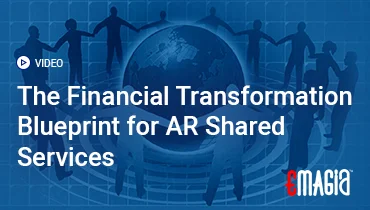Reconciliation is a critical process in accounting and finance that ensures the accuracy and consistency of financial data. In its simplest form, reconciliation involves comparing two sets of financial records—such as bank statements and company ledgers—to identify discrepancies and errors. This practice is essential for maintaining the integrity of financial statements, detecting fraud, and ensuring that businesses can make informed financial decisions.
In this detailed blog post, we’ll explore the different types of financial reconciliation, the process, its benefits, challenges, and how automation is transforming this crucial task. Additionally, we’ll highlight how Emagia helps streamline the reconciliation process using AI-powered solutions.
Introduction to Financial Reconciliation
Financial reconciliation is the process of ensuring that two separate sets of financial records match. This typically involves comparing internal records, such as those from a company’s accounting system, with external records, such as bank statements. The goal is to identify and resolve discrepancies that may arise due to errors, unauthorized transactions, or other issues.
Reconciliation is vital for any business as it helps ensure the accuracy of financial data, builds trust with stakeholders, and ensures compliance with accounting standards and regulations. Without proper reconciliation, businesses may face issues such as fraud, financial mismanagement, and inaccurate financial reporting.
Why is Reconciliation Important in Accounting?
Reconciliation serves as a safeguard for financial reporting. It provides a mechanism to detect and correct errors early, preventing them from affecting the final financial statements. Regular reconciliation helps build confidence in the accuracy of financial data, which is crucial for decision-making, budgeting, and forecasting.
How Does Reconciliation Contribute to Financial Accuracy?
By comparing financial records from different sources, reconciliation ensures that all figures align. This process helps businesses spot any discrepancies, such as missing transactions or errors in recording data. Maintaining accurate financial records supports transparency, compliance, and overall financial health.
Understanding Different Types of Reconciliation
There are several types of reconciliation processes, each serving a unique purpose in financial management. Here, we’ll explore the most common ones:
Bank Reconciliation
Bank reconciliation involves comparing a company’s internal records with its bank statements to ensure consistency. This is done to verify that the amount of money shown in the company’s books matches the balance reported by the bank.
- Why is Bank Reconciliation Important?
Bank reconciliation helps detect errors in the company’s cash records or in the bank’s reporting. It also identifies fraudulent activities, such as unauthorized transactions or unaccounted-for fees. - Steps Involved in Bank Reconciliation
- Compare the bank statement with the company’s cash account.
- Identify any discrepancies such as outstanding checks, deposits in transit, or bank errors.
- Adjust the company’s books to reflect these differences.
- Ensure that the final balance matches the bank’s report.
General Ledger Reconciliation
General ledger reconciliation ensures that all accounts in a company’s ledger are complete, accurate, and correctly classified.
- Importance of General Ledger Reconciliation
A well-maintained ledger is crucial for accurate financial reporting, as it serves as the primary source of data for financial statements. - How to Perform General Ledger Reconciliation
Regular checks should be conducted to ensure all transactions are recorded in the correct accounts. Any discrepancies should be resolved to ensure accurate reporting.
Credit Card Reconciliation
Credit card reconciliation ensures that the company’s records align with credit card statements.
- Why Credit Card Reconciliation Matters
It helps verify that all business-related credit card transactions are properly recorded and identifies potential fraud or unauthorized charges.
Accounts Payable and Accounts Receivable Reconciliation
Reconciliation of accounts payable and accounts receivable ensures that payments and collections are accurately recorded.
- Accounts Payable Reconciliation
This involves ensuring that all outgoing payments are recorded and that liabilities match the company’s payment obligations. - Accounts Receivable Reconciliation
This process ensures that incoming payments are accurately reflected in the company’s financial records.
The Reconciliation Process Explained
Understanding the steps involved in reconciliation is key to implementing an effective process. Here’s a breakdown of the typical reconciliation workflow:
Step 1: Data Collection and Preparation
The first step in the reconciliation process is gathering the relevant financial documents. This may include bank statements, invoices, receipts, and payment records. It’s essential to ensure that all data is up-to-date and accurate before proceeding.
Step 2: Identifying Discrepancies
Once the data has been collected, the next step is to compare the records. Discrepancies can arise from various sources, including missing transactions, duplicated entries, or errors in amounts. Identifying these discrepancies is crucial to resolving issues promptly.
Step 3: Correcting Errors and Adjusting Balances
Once discrepancies are identified, the next step is to correct any errors in the records. This may involve adjusting the company’s books to reflect unrecorded transactions or correcting errors in recorded amounts.
Step 4: Generating Reconciliation Reports
Finally, once the reconciliation is complete, a report is generated that summarizes the process and any adjustments made. This report serves as a record of the reconciliation and is important for future reference and auditing.
Benefits of Financial Reconciliation
Reconciliation provides a range of benefits for businesses, including:
- Improved Accuracy and Completeness of Financial Statements
Regular reconciliation ensures that financial statements are accurate and reflect the true financial position of the company. - Prevention of Fraud and Financial Mismanagement
By identifying discrepancies and unauthorized transactions early, reconciliation helps prevent fraud and mismanagement. - Better Decision Making Through Accurate Data
Reliable financial data enables business leaders to make better decisions regarding budgeting, investments, and financial strategy. - Compliance with Regulations and Audits
Regular reconciliation helps ensure compliance with tax laws and accounting standards, making it easier to pass audits. - Building Trust with Stakeholders and Investors
Accurate and transparent financial records foster trust with stakeholders, investors, and regulators.
Common Challenges in Financial Reconciliation
While reconciliation is crucial for accurate financial reporting, businesses may face challenges in the process:
Dealing with Complex Financial Systems
As businesses grow, managing multiple financial systems can become increasingly complex. Integration between different systems is often a challenge during the reconciliation process.
Handling Discrepancies in Large Volumes of Data
Larger organizations often deal with vast amounts of data, making it difficult to spot discrepancies manually. Automation tools can help alleviate this burden.
The Risk of Human Error
Manual reconciliation is prone to errors, such as data entry mistakes or overlooking discrepancies. Automation significantly reduces this risk.
Integration of Different Financial Tools
When companies use multiple financial tools or platforms, ensuring that they integrate seamlessly for reconciliation can be challenging.
How to Implement an Effective Reconciliation Process
Implementing an effective reconciliation process requires a clear strategy:
- Step-by-Step Guide to Creating a Reconciliation Workflow
Design a systematic process for reconciling different accounts, including clear roles, timelines, and workflows. - Choosing the Right Reconciliation Software
Choose software that supports automation, integrates with your existing tools, and ensures accurate, real-time reconciliation. - Setting Up Reconciliation Schedules
Establish regular reconciliation schedules—monthly or quarterly—to ensure that records are always up-to-date.
The Role of Automation in Financial Reconciliation
Automation is revolutionizing the reconciliation process by reducing manual effort and improving accuracy. AI-powered reconciliation software can automatically match transactions, flag discrepancies, and generate reconciliation reports, making the process faster and more efficient.
- How Automation Saves Time and Reduces Errors
Automation eliminates the need for manual data entry, reducing the likelihood of human error and speeding up the reconciliation process. - Key Features of Automated Reconciliation Software
Features include real-time data syncing, error detection, automated report generation, and easy integration with existing financial systems.
How Emagia Helps in Streamlining Financial Reconciliation
Emagia leverages AI-powered solutions to streamline the financial reconciliation process for businesses. With Emagia, you can automate data matching, detect discrepancies in real time, and ensure compliance with regulatory requirements. Emagia’s platform reduces the need for manual reconciliation, freeing up valuable time for financial teams and minimizing errors.
- AI-Powered Solutions for Automated Reconciliation
Emagia uses artificial intelligence to automate complex reconciliation tasks, significantly reducing the time and effort required. - Improving Accuracy and Efficiency with Emagia
The platform enhances accuracy by minimizing human errors and increasing the speed of reconciliation cycles. - Ensuring Compliance and Security
Emagia’s platform ensures that all reconciliations meet compliance standards and that sensitive financial data is secure.
Key Metrics for Successful Reconciliation
To measure the success of the reconciliation process, businesses should track key performance indicators (KPIs):
- Accuracy Rate in Reconciliation
Track how often reconciliation reports are error-free. - Time Taken for Each Reconciliation Cycle
Monitor the time it takes to complete reconciliation cycles to identify potential areas for improvement. - Discrepancy Resolution Time
Measure the time it takes to resolve discrepancies and close reconciliation gaps.
Frequently Asked Questions (FAQs)
What is the purpose of financial reconciliation?
Financial reconciliation ensures that financial records are accurate, up-to-date, and match across different systems, reducing errors, discrepancies, and the risk of fraud.
How often should reconciliation be done?
Reconciliation should be performed regularly, typically monthly or quarterly, to ensure financial data is accurate and up-to-date. However, for larger businesses, weekly or daily reconciliation may be necessary.
What are the common reconciliation errors?
Common errors include transaction duplication, misclassified expenses, missing entries, or calculation mistakes.
What are the tools available for financial reconciliation?
There are numerous reconciliation tools available, including Excel spreadsheets, cloud-based solutions, and specialized financial reconciliation software like Emagia, which integrates AI for automated processes.
How do discrepancies in reconciliation affect financial statements?
Discrepancies can lead to inaccurate financial reporting, which might affect decision-making, audit outcomes, and financial health assessments.
Can financial reconciliation be automated?
Yes, automation tools, including AI-powered platforms like Emagia, can help automate the reconciliation process, reducing manual effort and errors.
What is the difference between bank reconciliation and general ledger reconciliation?
Bank reconciliation focuses on matching the company’s bank records with internal financial records, while general ledger reconciliation ensures that all accounts in the ledger are accurate and complete.
Why is reconciliation important for businesses?
Reconciliation ensures the accuracy of financial data, helps detect fraud or errors, supports compliance with regulations, and provides a reliable foundation for business decision-making.
What is the role of AI in financial reconciliation?
AI can automate data matching, identify discrepancies, and optimize reconciliation workflows, significantly improving accuracy and reducing manual errors.
What is the cost of implementing reconciliation software?
The cost varies depending on the size of the business and the complexity of the reconciliation process. Many software providers offer tiered pricing models based on the features and scale required.
By understanding and implementing effective reconciliation practices, businesses can significantly enhance their financial accuracy and overall management. Reconciliation is no longer just a routine task but a critical element in safeguarding the financial integrity of any organization.



